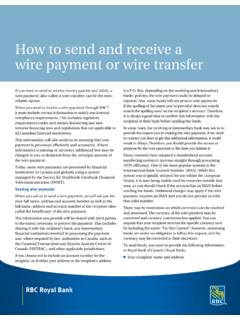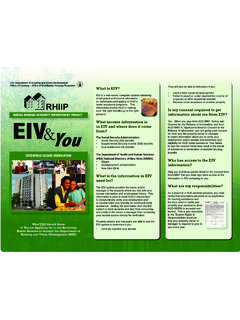Transcription of Military Maternity and Parental Leave Policies
1 CRS INSIGHTM ilitary Maternity and Parental Leave PoliciesFebruary 3, 2016 (IN10436) | Related AuthorKristy N. Kamarck |Kristy N. Kamarck, Analyst in Military Manpower 7-7783)On January 28, 2016, Secretary of Defense Ashton Carter announced that the Department of Defense (DOD) would be establishing new Policies for Maternity and Parental Leave as part of the department's "Force of the Future" initiative. Existing DOD policy (DODI , Incorporating Change 2, effective August 12, 2013) defined Maternity Leave as, "a convalescent period up to 6 weeks following pregnancy and childbirth." The existing policy also authorized Parental Leave , stating, "A married member on active duty whose spouse gives birth to a child shall receive 10 days of non-chargeable Leave of absence to be used in connection with the birth of the child.
2 " The new policy, as announced, extends the period of Maternity Leave up to 12 weeks and DOD would seek legislative action to extend Parental Leave up to 14 days. The Maternity Leave decision would apply to all servicemembers in the active duty component and to certain activated reserve component Law and PoliciesThe Secretary of Defense has authority to establish Leave regulations for Military servicemembers under Section 704 of Title 10, United States Code. This DOD-wide policy overrides a policy change by the Secretary of the Navy in July of 2015 which had extended Maternity Leave to 18 weeks for active duty servicemembers in the Navy and Marine Corps. In his announcement of the new policy, Secretary Carter stated that Navy and Marine Corps servicemembers who are currently pregnant or who become pregnant within 30 days of the enactment of the policy can still take the full 18 weeks of paid Leave .
3 The Army (AR-600-8-10) and the Air Force (AFI36-3003) Maternity Leave Policies authorized 42 days of convalescent Leave after normal pregnancy and childbirth prior to this active duty servicemembers are authorized (10 701) annual Leave that is accumulated at a rate of days per month of active service. Maternity and Parental Leave does not count against the servicemember's annual Leave balance. No provision in current law establishes a minimum or maximum requirement for Maternity Leave for servicemembers. The National Defense Authorization Act for Fiscal Year 2009 ( 110-417) authorized Parental Leave for the first time for servicemembers whose spouses gave birth. Section 701(i) of Title 10, United States Code, authorizes Parental Leave ,Under regulations prescribed by the Secretary concerned, a married member of the armed forces on active duty whose wife gives birth to a child shall receive 10 days of Leave to be used in connection with the birth of the Carter also announced a prospective policy change for adoptive parents.
4 Leave associated with adoptions is also authorized by law (10 701). Current DOD policy states:A Service member who adopts a child in a qualifying adoption shall receive up to 21 days of non-chargeable Leave of absence to be used in connection with the adoption. This absence shall be taken within 12 months following the adoption and may be authorized in conjunction with ordinary Leave . In the event that two Service members who are married to each other adopt a child in a qualifying child adoption, only one of the members shall be granted an adoption Leave of is seeking legislative change that would allow a second parent, in the case of dual service Military couples, to request two weeks of Parental Leave . According to DOD there are approximately 84,000 such Military marriages that could benefit from this Secretary's announcement does not apply to DOD civilian employees.
5 These employees are covered by the Family and Medical Leave Act of 1993 (FMLA; 103-3, as amended) which entitles most federal employees to a total of up to 12 workweeks of unpaid Leave for the birth of a child or placement of a child for adoption or foster care. For more information on FMLA, see CRS Report R44274, The Family and Medical Leave Act: An Overview of Title I, by Sarah A. for CongressSupporters of paid Maternity and Parental Leave suggest that it encourages workforce recruitment and retention and helps support the well-being of Military families. In announcing this policy change, Secretary Carter emphasized that the purpose was to provide incentives for "attracting and retaining talent" and promoting the "health and wellness" of mothers. Those opposed to lengthening Military Maternity and Parental Leave suggest that it could negatively impact Military readiness due to lost duty time and potentially undermanned units.
6 Today women account for (201,318) of the active duty force and the number of annual births for active duty women is typically between 15,000 and 16,000. Approximately 55% of the active duty force has a dependent spouse and/or has oversight of this issue and may opt to codify Maternity Leave authorizations, amend existing legislation regarding the length of Parental Leave for Military servicemembers, and/or authorize a second parent in a dual Military marriage to take Leave in the case of an adoption. Congress may also require DOD to investigate and report on the impact of these policy changes on Military recruitment, retention, and readiness.
















